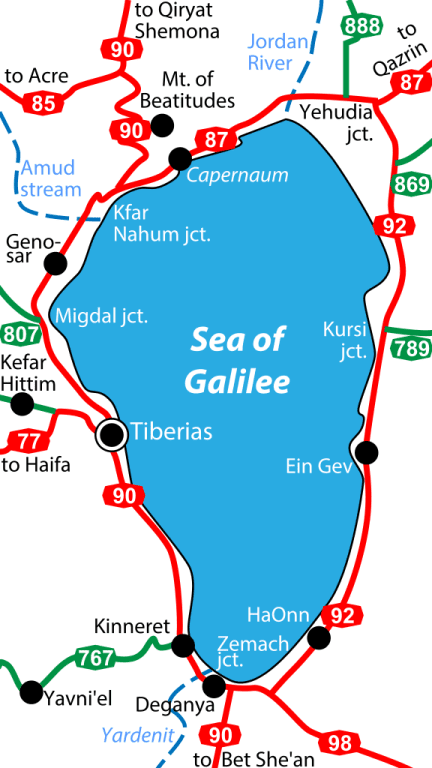
Wikimedia Commons public domain map
Here’s a very nice article about a synagogue from late antiquity that’s located just to the northwest of the Sea of Galilee:
***
Alert visitors to Egypt will have noticed this phenomenon, but they may wonder how to explain it:
“Why do so many Egyptian statues have broken noses?”
***
I apologize for being a tad late with this item, which, ideally, should have been posted around Easter time:
“Archaeologists Unearth Giant Chocolate Bunny In Ruins Of Ancient Babylon”
***
Incidentally, I’ve been told that, at the traditional site of the combat between David and Goliath, the Israeli authorities regularly bring in truck loads of small rocks and carefully dump them around the site. This is done in order to keep up the supply there for the tourists who want to grab a little stone and take it home as a souvenir. I hope the story is true. It strikes me as really funny.
***
One of the unique aspects of our Arabic major at BYU is that we require — we don’t merely request — of our students that they spend a semester abroad in intensive Arabic language study. Although that semester has been based in the past in various locations, including Syria, Israel, and Egypt, it has settled for the past several years in Jordan. Here is its official description:
Jordan is a small but important country in the eastern Mediterranean area that exemplifies many of the problems, as well as the promise, of all countries in the area. The population is divided fairly evenly between native Jordanians of Bedouin and rural stock and urban Palestinians who are ultimately refugees. Hundreds of thousands of Syrian refugees have also flooded the country. The economy is developing but still has major problems. Water shortages are severe. Understanding Jordan is a good way to begin to understand the entire region. You will be exposed to a quasi-democratic country with some of the trappings and rhetoric of democracy but not always its substance, which is currently in a state of enormous flux and facing critical issues of succession, inclusion, and legitimacy. You will be exposed to Christian Arabs of various types, a multifaceted Islam in a variety of settings and manifestations, and a political and religious discourse that is fascinating and unfamiliar. Most importantly, you will have many opportunities to get to know fascinating and resilient people, come to understand their concerns, views, and ways of living, and learn a great deal about yourself.
Lately, though, BYU has also added an “Arabic flagship program,” which is a real feather in BYU’s cap. Here’s how the official description reads:
The Arabic Flagship provides a rare opportunity for students to develop superiorArabic ability in the professional field of their choice. After taking the core Arabic classes on campus and participating in the third-year study abroad program in Jordan (see separate program flyer), students may apply to the advanced Flagship program. Upon returning to campus for winter semester, accepted students take debate (ARAB 411R) and writing (ARAB 495R) classes which are supplemented by a professional tutorial course (ARAB 490R) in the field of their choice (e.g., law, medicine, engineering, business, etc). Accepted students also take exams in January to qualify for the year-long capstone experience in Morocco, which begins in June 2019 and includes two components: intensive instruction at the Arab American Language Institute in Morocco and an internship related to the students’ professional goals.











